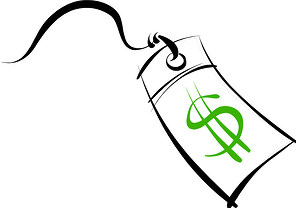 When companies decide it’s time for a new ERP system, they often have questions about how much to budget for the software and the implementation process. Research on the Internet or from networking contacts yields information that is all over the map, leading to even more confusion. The truth is you can pay as much or as little as you want for an ERP system, but to get the best return on your ERP investment it's important to select a system that meets your company’s needs. So how do you determine what's a "reasonable" price? Here are some things to consider.
When companies decide it’s time for a new ERP system, they often have questions about how much to budget for the software and the implementation process. Research on the Internet or from networking contacts yields information that is all over the map, leading to even more confusion. The truth is you can pay as much or as little as you want for an ERP system, but to get the best return on your ERP investment it's important to select a system that meets your company’s needs. So how do you determine what's a "reasonable" price? Here are some things to consider.
How complex is your manufacturing and distribution environment?
Tier I ERP systems can cost many millions of dollars to purchase and even more to set up. The vendor usually designs these systems for large, multinational corporations with a complex manufacturing and distribution environment. They're also designed for companies that have a large IT staff to maintain the system and large team of people in every department who do specific steps in a business process. The more complex your organization and business processes are, the more likely you will need a complex ERP system to support it.
Small and medium-sized businesses (SMBs) usually can’t afford to buy licenses for a tier I ERP system, and the costs of implementation and maintenance make it even more prohibitive than the initial high-cost license fees. Tier I systems also require larger IT staffs and have complex business processes with multiple steps that may be designed to suit multiple industries or that assume different people accomplish each step. Since at many SMB manufacturers the same individual is responsible for all or most steps in a specific business process, this process structure adds additional non-value added time to each process as users must run through multiple menu items to accomplish a simple process.
Understand your business requirements.
Even though SMBs have smaller staffs and lower budgets, they still have all the same business needs as larger enterprises and they strive to achieve the same benefits from their enterprise software investments. They simply need to accomplish the identical tasks more efficiently than larger companies do, and to scrutinize their IT investments more carefully.
Therefore, the first step in any ERP search process should be to ensure that you have a complete understanding of your business requirements. Know up front which features are “musts” and which would just be nice to have so you don’t succumb to buying more system than you need or can afford. Narrowing your software choices to ERP solutions that have a focus on your industry is a good first step.
What's the relationship between software and services costs?
Another important factor you should consider when narrowing down your choice of ERP systems is the relationship between the cost of the software and the cost of the required implementation services and user training. Most small to medium-size manufacturers find that a relationship of 1:1 or 1:1.5 between software and total services is comfortable and reasonable. Investigation and reference checking can help you to determine the true ratio for the solutions you are considering.
Most tier I ERP systems have a software to service ratio of at least 1:5 and sometimes it is as high as 1:9 or more, while smaller, industry specific solutions will run closer to the ideal 1:1 ratio. Bear in mind that the less you spend on the license, the closer that ratio will come to 1:1.5, which is still quite reasonable when you consider all implementation and service costs.
Consider how the vendor licenses its software.
You should also consider how the vendor licenses its software. For example, Exact MAX is priced by user, which makes it simple to understand and calculate. Training and implementation services are in addition to the license costs. Many large enterprise ERP systems have complicated pricing schemes based on your annual revenue, profit margins, number of SKUs and/or employees which makes pricing difficult to understand and can result in unplanned future charges as these elements fluctuate.
An effective and properly chosen ERP system pays for itself relatively quickly due to the improved efficiency and productivity gains, along with savings from better, faster fact-based decisions, improved inventory management and more operational throughput.






